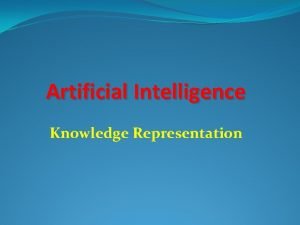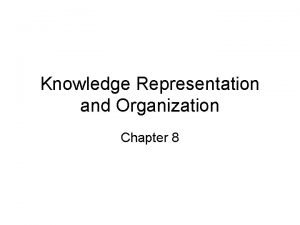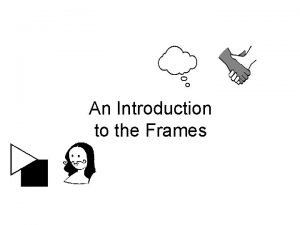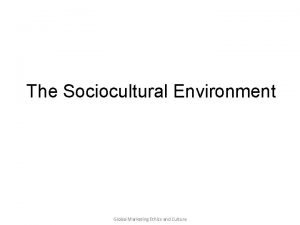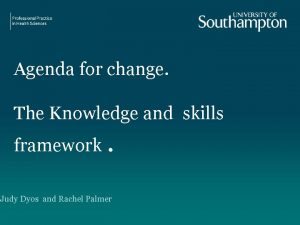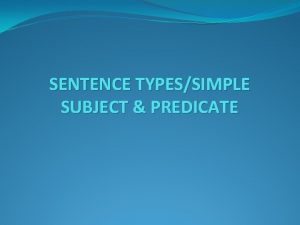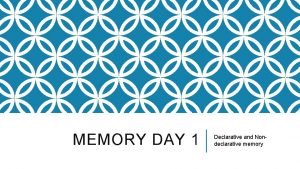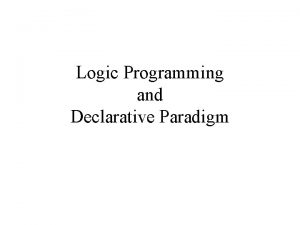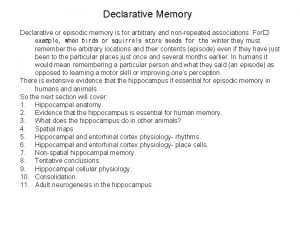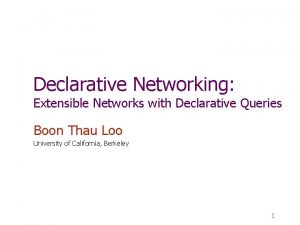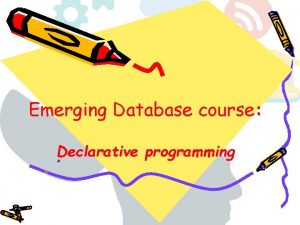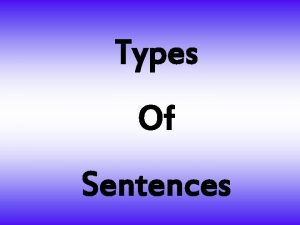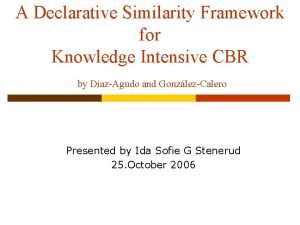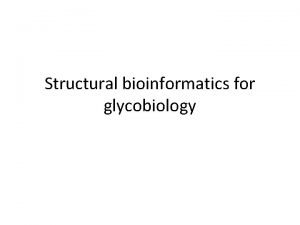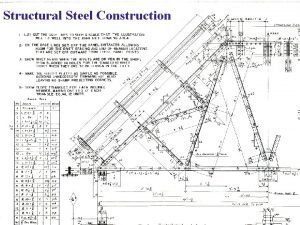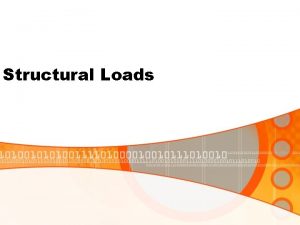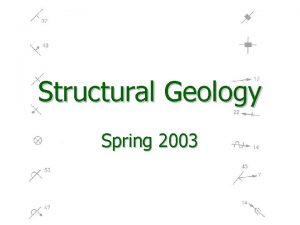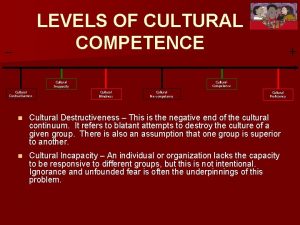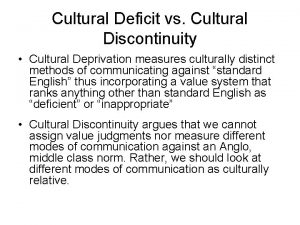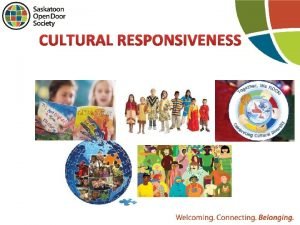The Structural Cultural Knowledge Framework and Key Declarative





















- Slides: 21

The Structural Cultural Knowledge Framework and Key Declarative Structures: Contextualization and Worker Exploitation Jon M. Shapiro, Northeastern State University

Original Research Question Why and How are Some U. S. Firms Successful within International Business (While Others Fail)? How can we develop socially-responsible supply-chains?

Refined Question Why and How are Some Businesses Effective at Developing Good International Business Relationships and Performance. It becomes apparent that cultural understanding is a relevant focal construct.

Epistemic Aims: Philosophy of Science: • When there exists a solid theoretical base, the aim of deducing and testing theories is appropriate, however, • When the goal is to discover, and understand phenomenon post-positivist paradigms may be most appropriate.

Literature Contributions What is culture: • Hofstede, G (1982, 1997) (4 dimensions----central work, problematic, and over-used) • Hall and Hall (1987) (core East-West distinctions) • Kluckhohn, F. R. and Strodbeck F. L. (1961) (critical value orientations)

Table 1 Cultural Declarative Knowledge: Key Conceptual Contributions

Literature Contributions (cont) Ability to Understand Operate within a Culture • Cultural Intelligence (CQ) (Earley 2002 -7) • Cultural Sensitivity (CS) La. Bahn and Harich (1997), Shapiro, Ozanne and Saatciglu (2008) • Cross Cultural Competence (ICC) Johnson, J. P. , Lenartowicz, T. and Apud, S. (2006) Earley’s CQ encompasses three different facets: cognitive (i. e. , various knowledge structures, external scanning, pattern recognition, and self-awareness), motivational (i. e. , efficacy, persistence, goals, enhancement, and values), and behavioral (i. e. , repertoires of practices, rituals, and habits).

Summary Researchers define intelligence as some composite of: knowledge of cultural facts and the cognitive, motivational, and behavior skills needed to adapt.

Limitations to the Past Research • • • Lack of empirical support Past research argues for the importance of culturally-specific knowledge, however, little guidance is provided regarding the nature of this knowledge and the manner in which it is acquired, assimilated, and utilized. While many researchers suggest that cultural sensitivity involves some type of skill, little agreement exists as to the specifics of what these skills actually are.

Data Collection and Analysis Sample, Collection, and Analysis • North American buyers who owned firms in the United States but hired Thai firms to produce clothing. • Fashion industry where even the meanings of color and style are culturally embedded. • Participant observations and informal interviews over a 26 -month period at six of the world’s largest fashion trade shows. • Evolving Design , Hermeneutical Analysis • 12 informants, interviewed 3 times, • 1000 single spaced pages of interview data

Findings (summarizations) Cultural Knowledge Structures Dimension One: Cultural Declarative Knowledge • Declarative knowledge involves simple facts (Fiske and Taylor, 1984; Mc. Pherson and Thomas, 1989; Stillings et al. , 1987). Similarly, cultural declarative knowledge is simple facts about a culture.

Cultural Knowledge Structures (cont). • Procedural Knowledge: representations in memory that are linked to goal-directed actions (Mc. Pherson (et al. , 1987). Dimension Two: Etic (Outsider's) Procedural Knowledge “Categories are organized around facts that are derived from within the home culture and linked to heuristics that lead to problem solutions at home. ” As a result, to the extent to which this knowledge collides with the host culture, s/he is potentially less able to operate effectively in the new environment.

Cultural Knowledge Structures (cont). Dimension Three: Emic (Insider's) Procedural Knowledge “Categories are organized around concepts that are derived from within the host culture, and are linked to heuristics that often lead to problem solutions within this context. ” As a result, s/he is better able to operate effectively in the new environment and has better developed.

Dimension Four: Behavioral: Environmental Scanning and Enacted Procedural Knowledge • Scanning Involves Obtaining Knowledge Through Listening and Other Observations • Enacted procedural knowledge includes utilization of schematic strategies to obtain knowledge and develop trust (e. g. , mimicry, role playing, and control).

STRUCTURAL CULTURAL KNOWLEDGE FRAMEWORK • Structural Cultural Knowledge Framework (SCKFW): Focuses on the Hierarchical Nature of Knowledge Structures • Leading to the development of proper strategic communication approaches within global marketing management • Based on Key Declarative Knowledge Theories---synthesis of general ground-based cultural knowledge • Based on “SCKFW”---Development of a communication s process which aims to install needed knowledge in the appropriate hierarchical manner.

Table Cultural Declarative Knowledge: Categorical Questions

Key Elements within Fashion Production • Context, face, human nature, collectiveness, and uncertainty avoidance, • Finding successful firms involves communicating effectively to create trusting relationships. • Key dimensions of relational trust are viewed differently cross-culturally. • Context and face vital

Trust and Justice • Obtaining correct specs involve avoiding putting forth requests that are unobtainable and sustainable. • The key is contextualization “becoming highcontexted within the relationship and knowing/predicting all elements within the supply-chain”. • The same principles apply to labor exploitation.

Summary • The large retailers, Nike, Walmart, Carrefour Aldi, Amazon have policies aimed at eliminating labor exploitation (low wages, unsafe environment, indentured servitude, slavery), yet research has shown that exploitative practices are common. This is true in Fashion, and also applies to other sectors across all global contexts. Within this study, the firms that are able to eliminate or reduce these practices are • highly contexualized

Recommendations • Firms develop clearer policies against unfair labor practices • Develop procedures to eliminate exploitation, trafficking, child labor, and slavery. • Contextualization at its best, requires well trained and empowered business ethnographers. • Findings should inhibit loss of face where alternatives are developed and good practices are rewarded. • Poorly performing partners should be provided incentives to change, if feasible. • .

Recommendations (cont) • Poorly performing partners should be provided incentives to change, if feasible. • Technology, forecasting, ai, social media, CRM, and dynamic communications provide value. • This process may be part of certification that is marketed to key market segments as a value-added product and a core advantage. • Non-verbals and relationships lead to knowledge. Trust is developed though avoiding the loss of face. Loss of face is minimized though cultural knowledge structures and contextualization.
 Mapping between facts and representation
Mapping between facts and representation Procedural knowledge in ai
Procedural knowledge in ai Evolve knowledge
Evolve knowledge Cultural frame in art
Cultural frame in art Knowledge creation and knowledge architecture
Knowledge creation and knowledge architecture Structural framework art
Structural framework art Cultural framework terpstra and sarathy
Cultural framework terpstra and sarathy Public health skills and knowledge framework
Public health skills and knowledge framework Nhs knowledge and skills framework band 5
Nhs knowledge and skills framework band 5 Compare procedural semantics and declarative semantics.
Compare procedural semantics and declarative semantics. Simple predicate
Simple predicate Imperative declarative exclamatory
Imperative declarative exclamatory Declarative and negative sentences
Declarative and negative sentences Whats a interrogative sentence
Whats a interrogative sentence Tripadvisor business model canvas
Tripadvisor business model canvas Key partners key activities key resources
Key partners key activities key resources What is theoretical framework
What is theoretical framework Personal and shared knowledge
Personal and shared knowledge Knowledge shared is knowledge squared
Knowledge shared is knowledge squared Knowledge shared is knowledge multiplied interpretation
Knowledge shared is knowledge multiplied interpretation Contoh shallow knowledge dan deep knowledge
Contoh shallow knowledge dan deep knowledge Apriori and aposteriori knowledge
Apriori and aposteriori knowledge
